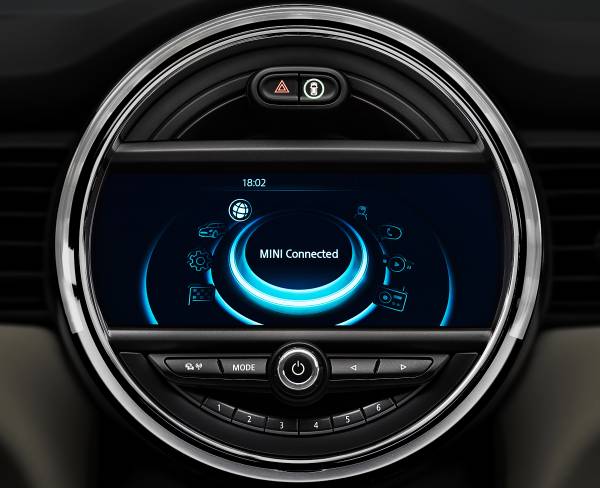
You have to consider the pros and cons of buying used goods. In this article, we will discuss the benefits and disadvantages of buying used and find out about sources online. We'll also consider the cost savings and trustworthiness of sellers. What are the downsides to buying used items? If you're able to find the right place to search, buying used is not a bad option. Here are some suggestions:
The disadvantages of purchasing used
People are sometimes hesitant to buy used items. It can be difficult for you to find something in excellent condition. You may need to spend a lot of time looking. Often, used items look nicer in the picture, but they might disappoint when you see them in person. Be patient and ready to put in some effort. Sometimes items may not be as good in person as the pictures show. You may need to settle for less if your goal is to purchase a high-quality item. The range of items available for purchase is also limited.
There are some disadvantages to buying used items, such as low reliability and poor quality. Many used goods don't work as well or may be damaged. Some sellers might not take care of this defect. This makes it very important to test the item before buying it. The availability of goods for charity and welfare programs is also affected by the purchase of used goods. A quality product that is used well can be up to 80% cheaper than a new item.

Online source for purchasing used items
Buying used things online has many advantages. You can buy items from all over the globe and it is usually cheaper than buying locally used goods. You can browse through a wide range of products, including men's and ladies' clothing. You can also sort them by price and condition. Some online sources even let you message sellers. These sites are completely free and do not require you to provide your credit card number.
A great way to save money on secondhand goods is to purchase them. Craigslist. eBay. Thrift stores are all great online resources for secondhand items. These sites offer great opportunities to purchase used goods at very affordable prices. It is also a good idea to purchase used. Be sure to use shipping management software so you don't run into any problems. The online selling of used goods is not going away, it seems.
Sellers who are trustworthy
In order to ensure trustworthiness when buying used items online, you might wonder how to do this. This can be checked by looking at the seller's feedback rating. The higher the feedback rating, you will see how trustworthy the seller is. You could also check the general sales conditions on the website and reach out to the seller directly. Make sure you verify the authenticity of the website by checking the quality seal, award and rules that govern the sale of the products.
There are many factors which influence how trustworthiness is perceived by consumers. One factor is the seller's reputation. A good reputation demonstrates the seller's honesty and concern for other people. Secondly, they should be responsive to customer inquiries. When a seller is responsive, a buyer is more likely to feel confident in his or her decision. Therefore, a fast response time is essential. Consumers have become increasingly demanding in the digital age.

Cost savings
There are many benefits to buying secondhand items. You can not only save money, you can also help the planet. Although they are convenient, new products can be expensive and have negative impacts on the environment. Here are some reasons to buy used. You can read on for more information! And keep in mind that if you do decide to buy new, be sure to choose a retailer who is certified by the Better Business Bureau.
You will also reduce your waste. Buying used items will reduce the amount of materials you create, which means less waste. Although many people associate waste reduction with plastics and cans, this also applies to household items as well as clothing. This is why most people should buy used. You can save money by buying used products while still getting high-quality products.
FAQ
How long does an automotive course take?
A three-year course in automotive is required.
The first year focuses on theory and learning about cars. Practical training is the second year. You will learn to drive, fix engines and perform other tasks around the car. You will spend the final year working in a local garage to gain real-world experience.
How can I prepare myself for a mechanic apprenticeship
It is vital to be able to comprehend what you are doing. It is important to know the basics of how cars work. You will be able to know exactly where to begin when you arrive at the garage for your first day.
You should also know how to fix common problems such as tires or broken lights.
You will be able to diagnose and repair problems yourself.
It is also important to know how the different pieces fit together in order to put them together again.
And finally, you must know how to use tools safely and efficiently.
All these things will help you to become a competent mechanic.
Is it possible to work as an automotive mechanic?
Yes, it is possible. Many garages list their vacancies online. Many people simply apply for the fun of it. Try applying to a few jobs and seeing if the garages accept student applications. You could also ask your family and friends if they know anyone in the industry. They might be willing to recommend someone.
What qualifications are necessary to become a mechanic
A series of tests is required to be a mechanic. These include:
-
A test of general knowledge
-
A practical exam
-
An apprenticeship test
These tests are designed to ensure that you understand the basic concepts of mechanical engineering and physics before you start working as a mechanic.
After passing these tests, you will be eligible to become a mechanic. An apprenticeship is still required. This will involve training in the trade.
To be able to repair vehicles, you'll need classes or workshops. It will be necessary to work alongside experienced mechanics.
You'll need a high level of concentration and attention to detail if you want to succeed as a mechanic. Vehicle repairs require you to be very attentive.
To become a successful mechanic you'll need patience. If you don't like to follow instructions, then this may not be the right career path for you.
However, if you love cars or enjoy working on them, you might be happy in this field.
Is being a mechanic apprentice hard?
It is not easy but it can be done quickly. There are many opportunities for advancement.
You will need to be patient and persevering. You should also be able to repair cars, trucks, and motorbikes.
Customers and family members can put a lot pressure on you. They want you to succeed. However, you shouldn't be forced to make difficult decisions.
This could be an excellent career choice for someone who enjoys fixing cars. You can make a decent living and build your business.
You might choose to take a different route. If this is the case, you might want to become a technician.
This could involve using your technical knowledge to support other employees. Technicians could benefit from your technical expertise to solve problems or teach new techniques.
Another option is to become an advisor in service. Here, you'll provide advice and assistance to customers when they bring their cars to a garage.
Your choice is based on what you choose to do. There are plenty of options available, and you can choose which suits you best.
What does it matter which college I attend?
You're wrong. There are no differences between colleges when it comes to getting into the automotive industry. However, some schools offer better programs than others so if you're looking for something more specialized, look elsewhere.
Statistics
- There were 749,900 jobs available for automotive service technicians and mechanics in 2016, which is expected to grow by six percent through 2026. (jobhero.com)
- The U.S. Bureau of Labor Statistics (BLS) reports that the job outlook for automotive service technicians and mechanics is expected to decline by 4% from 2019 to 2029. (indeed.com)
- According to the BLS, total auto technician employment is expected to exceed 705,000 by 2030. (uti.edu)
External Links
How To
How to properly diagnose your vehicle for repair
You should first examine the symptoms your car is showing to determine if it requires repairs. Then, follow these steps to diagnose your vehicle properly.
-
Check engine lights. The dashboard light indicators, including the engine light, oil pressure gauge, battery light indicator, coolant temperature gauge and RPM gauge, should be checked. If they have been flashing for more days than usual, it could be a sign that something is wrong with the vehicle.
-
Take a look at the treads. Tires that are worn can cause issues with handling and braking. The treads of the wheels should be inspected as well. They should be clean, and they should be smooth. You can do this by taking off the wheels. Check the tread condition with a flashlight.
-
Pay attention to the level of your brake fluid. You should always keep track of the amount of brake fluid in your vehicle. This will ensure that your brakes run smoothly. Low brake fluid levels could cause your brakes to fail when you apply pressure.
-
You should test the suspension system. Vehicles usually have a suspension system that helps absorb shocks and vibrations while driving. It allows for better control, smooth acceleration, and deceleration. Your vehicle might feel wobbly, or shake uncontrollably if it has a bad suspension. To determine whether your vehicle may have a suspension issue, you can try to put weight on the rear or front axle and watch the movement.
-
Examine the steering column. Steering columns are used to connect the steering wheel to the rest of the vehicle's components. Sometimes, steering columns are damaged by accidents. It is recommended to replace any steering column that feels loose, or shakey.
-
Pay close attention to the exhaust tube. The exhaust pipe helps move gases from a combustion chamber into the atmosphere. You can let harmful fumes into your home if your exhaust pipes crack or leak. Additionally, your tailpipe should be fixed immediately if it is bent.
-
Take a look at the underside of your hood. If you see anything unusual, take a look under the hood. Your engine could be leaking fluids. A professional technician should be contacted if your engine compartment emits an unusual smell.
-
The air filter should be checked. Your vehicle's air filter collects dust and debris from the outside environment. Vehicles that have a dirty air filter will not run well. Replace your air filter regularly.
-
Check the fan belt. The fan belt that connects your vehicle to the transmission is called the engine fan belt. If it breaks, the engine won't turn over. Replacing the belt is simple. All you need are a screwdriver & pliers.
-
Verify the radiator hoses. The radiator hose transports water from radiator to engine. It can become cracked or damaged and leak hot liquid onto your engine. The hose can be repaired with a pair or needle-nosepliers, and a wire brush.
-
Check the windshield wipers. Windshield wipers use electricity to clean away snow and rain. If they stop working, streaks could be left on your glass. Change the washer fluid to fix the problem.
-
Verify the condition of your battery cables. The batteries provide power to the electrical systems within your car. Always disconnect the negative wire before you replace batteries. Failure to do so can damage your alternator.
-
Pay attention to your headlights. Headlights help you see the road ahead. They can make it difficult to see if they stop working. To determine if your bulbs are out of date, check them.
-
Check the lights. The lights are there to warn other drivers if they approach you at night. It could cause distraction and even lead to an accident if it doesn't work.
-
You should inspect your brakes. Brakes will reduce the speed of your car in case of an accident. If they aren't working correctly, you could lose control of your car and crash.
-
Make sure to change the oil. Your engine will stay lubricated by the oil. This oil helps to prevent metal parts becoming too worn out. It is recommended to change the oil each month.